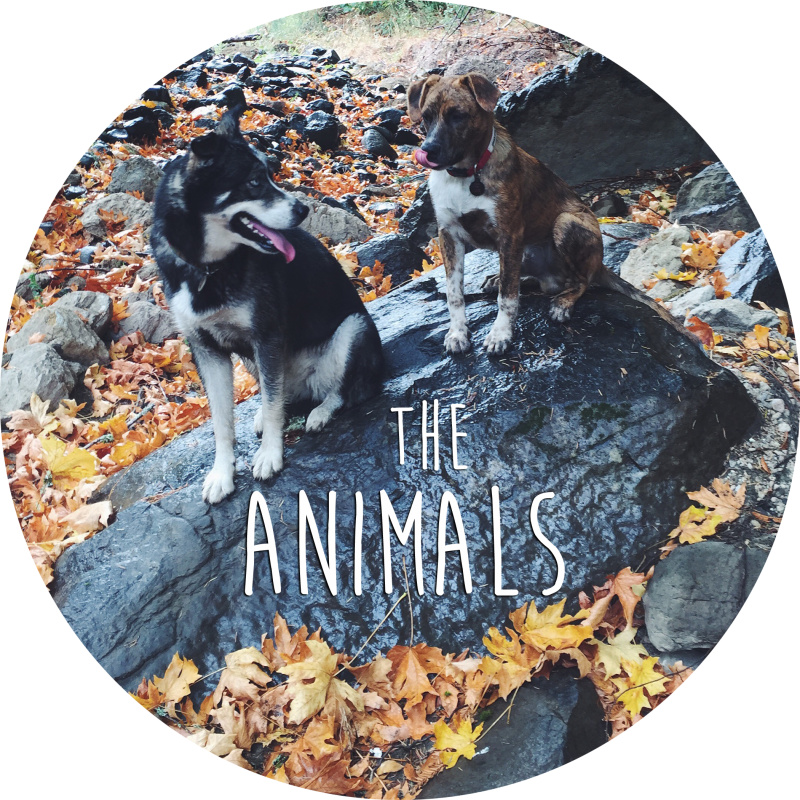What is Separation Anxiety?
Since one element this blog will be discussing separation anxiety, and our journey to work through Koa's separation anxiety, I thought it would help to discuss what exactly separation anxiety is.Separation anxiety manifest itself in many ways, but what is essentially boils down to is a disorder that causes a dog to panic when her humans leave her, and causes a number of undesirable, often frustrating and destructive, or even dangerous behaviors.
Causes
It is often caused by big disruptions in a dog's comfort zone, like being rehomed, losing a family member, being relocated, and other big scary changes.
With Koa, I believe that having spent the first 9 months of her life with another family and a large pack of dogs (mom and dad plus three siblings), and then being removed from all that was familiar to her caused her separation anxiety. Going from spending every day with lot's of dog companions to being alone in a house of strange humans was definitely a huge change, and when we first brought her home, although she would play and engage with us, she would stand by the front door at the end of the first few days, as if saying, "Ok, that was fun, but can we go home now?" which was a little heartbreaking to see.
Symptoms
Symptoms can include vocalization, stress panting, pacing, elevated heart rate, uncontrollable defecation and urination, self mutilation, digging, destruction of furniture, and escape attempts that can often be dangerous. We often make mistake these behaviors for malicious disobedience, but a dog that is so stressed that he defecates in his own crate, or scratches until his paws bleed isn't trying to test your patience, or being "stubborn," he simply believes that he has been abandoned and is reacting accordingly.
Luckily, Koa's symptoms are fairly mild. She stress pants, she paces and vocalizes, and searches for us relentlessly. Some dogs only exhibit symptoms when left completely alone, but for Koa it's generally any time that she is not with myself or Evan. The one exception was being left for a few hours at my mom's house with my mom, step dad, and brother, which was pretty amazing, but in general she will completely ignore anyone else she is with and search for us, howl by the door, and pace the house. When we first started crate training she peed in there a few times, but has luckily gotten past that point.
Treatment
Treatment is complicated and time-intensive. It involves desensitizing a dog to short absences, and building their comfort levels over time by creating a comfort zone with a crate or confinement area, and making sure not to push your dog past their threshold for absence. Counter-conditioning, when done right, can help a dog build positive associations to absences with things like treat puzzles and tasty chews. It involves closely monitoring your dog's body language, even monitoring your dog during absences so you can get the timing right. It's also essential to make sure that your dog is getting enough physical exercise and mental stimulation.
What does not work is punishment. Punishing your dog for behaviors caused by stress and fear are only going to exacerbate the problem. If you think your dog is suffering from separation anxiety, I highly recommend you contact a certified behaviorist or trainer that uses positive, science-based methods. A great resource for trainers or experienced dog owners is Malena DeMartini's book Treating Separation Anxiety in Dogs, which has been enormously helpful to me. DeMartini is a separation anxiety expert, and the founder of a separation anxiety training certification program, so you can also get tons of info and find a certified trainer through her website.
I am currently using DeMartini's book as a guideline for Koa's treatment, and we are up to around forty-five minute to an hour of calm absences. It may seem small, but every minute is a victory! In the meantime, Koa is happy to be away from us if she has enough pups to play with, so we manage longer absences by bringing her to trusted sitters and doggie daycare.
Won't they just get over it?
Nope. One of the hardest parts of dealing with separation anxiety is the pervasive belief that a dog will just get over it if you force them to. Because I refuse to leave Koa past her comfort zone, separation anxiety can sometimes affect my ability to go places or do things. To me, that's a part of dog ownership — I am here to care for her and advocate for her however I have to — but I receive a lot of skepticism from people who don't understand the disorder. Leaving separation anxiety untreated will often just make things worse, and trying to sneak out or trick your dog just means your poor pup will start to become more and more vigilant for tell tales signs that you are leaving, triggering that panic sooner and longer.
Do you have a dog with separation anxiety, or a dog that has worked through his or her separation anxiety? I would love to heart from you! What was your aha-moment? What resource helped you understand and help your dog most? Comment below with any input you may have!








